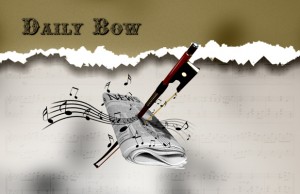Bringing In New Audiences without Alienating the Old Ones
The world of concerts is radically different today from what it was in the past century. The proliferation of recordings, the growth of the internet, and the advent of services like iTunes and Spotify have made it possible to listen to any song or piece you want without leaving your living room. From the prospective of someone like me, a music student, this is great: I can listen to countless performances of the same piece and compare them, or get to know a composer’s entire opus by simply streaming a playlist. For an orchestra, however, this is situation is less than ideal. The likelihood that I will attend a concert drops due to the lack of convenience. While I love live performance, it usually takes an extremely interesting program, a famous soloist, or a visiting ensemble to get me to ride the El an hour both ways and buy a ticket. And I’m a music student. Imagine how much harder it is to get a student who has never gone to a symphony concert to make that commitment.
But that’s not even the determining factor of what keeps young people out of classical concerts. The necessary etiquette and highbrow nature of concert halls, according to a recent article in the Huffington Post, prevents younger audiences from attending concerts. Procedures such as the expectation to well dressed and the appropriate times to applaud, among other factors, make potential audiences feel awkward. First, it’s because they feel as if they are among people who don’t want them there; second, it’s because they can’t attend a concert and react the way they feel inclined to. When young audiences attend a pop or rock concert, they can dress as the please, shout whenever they want, and applaud (or boo) after every song. They also know more about the music they hear at these concerts. Young concert goers say that classical music is too difficult for them to get into because the pieces require explanations and discussion, which are rarely offered up front at a symphony concert.
So what can be done about this? It is possible to change concert procedures without degrading the quality of the music. So perhaps we should do just that: modify the way we do things. Although some people enjoy dressing nicely for a concert, the truth is you don’t need to wear a suit to enjoy a symphony. And after you see a world renown violinist conclude the first movement of the Brahms Concerto, a 20 minute long feat of technical and musical wonder, it should be completely appropriate to applaud, even ovate if you feel like it. As the aforementioned article points out, applauding (and hissing) during the concert was the norm when the majority of the works played at a symphony concert these days had their premieres. Orchestras like the Philadelphia Orchestra have done very well recently with student discounts, offering a $25 student membership that allows them to buy rush tickets at the door. To me, it’s not a question of radically altering the face of a symphony concert. It’s simply about changing a few things that really should not be set in stone. A few changes can go a long way. What do you think? Does the etiquette established in the modern concert hall exist to protect the integrity of the music? Or can many of practices be modified or eliminated in favor of a pop concert feel? Comment below!















No comments yet.